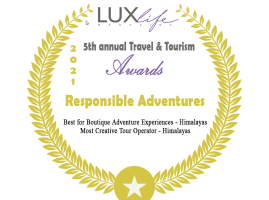Holi or Fagu Purnima, the festival of colours in Nepal
When does Holi take place?
29th and 30th March 2021
8th and 9th March 2020
20th and 21st March 2019
Holi or Fagu Purnima’s date changes according to the Hindu calendar. The Hindu calendar is based on solar and lunisolar calendars. It is very different from the Gregorian calendar, so most important festivals occur on other dates or even months on the Gregorian calendar.
In Nepal, we have a unique practice where the hillmen celebrate a day ahead of the Terai residents. Like many of the festivals of this region, there are many myths and stories behind each festival.
Holi is welcoming spring and summer. It is also observed to get a blessing from God for coming harvests and fertility of the land. This festival is celebrated in most South Asian counties.
Holi takes place on the night of Falgun Krishna Chaturdasi. However, the celebration starts on the next day of the Fullmoon (Purnima). Holi is a festival of colour, camaraderie, and love.
How Holi is celebrated
Holi in Nepal starts a week before the primary day of the festival. The tradition is to erect a long bamboo pole covered with different coloured cloths (called Chir locally) in Basantapur, Durbar Square. On the eve of Holi, the bamboo pole (lingo) is brought down, and the bamboo pole (Chir) is burnt. This occasion is known as Holika Dahan or Chir Haran, after which the festival of Holi begins.
This festival is celebrated with colours, music, sweets and most of all with water. The participants put colours on one another, a token of love. People go from house to house with relatives and friends in groups during the celebration. Putting coloured powder or liquid form while eating traditional Indian sweets throughout the day is how they celebrate Holi. Some people also play music and dance during this festival. The people of the hills in Nepal celebrate this festival a day ahead of the Terai region and India. Therefore the festival of Holi is celebrated for two consecutive days by the different areas of the nation.
Some participants use water guns to squirt water on others during the celebrations. Traditionally it used to be made of bamboo, but these days modern plastic water guns are used. In addition, the popularity of balloons and plastic bags filled with water is a less expensive way to have fun for the youth. Children start throwing water-filled plastic bags and balloons as early as a week before Holi begins.
People gather firewood to light fires while playing music and dancing. Some indulge in bhang (an edible cannabis preparation) with mixed lassis to enhance their celebration.
The alleys of villages and towns are alight with firewood. This is considered an essential part of the Holi festival. It symbolizes the end of Holi (Holika Dahan). Government offices are closed on Falgun Purnima in Nepal’s hilly regions as Holi is an official holiday here, while the Terai region celebrates Holi the next day.
Tales behind Holi
There are numerous stories behind the Holi festival.

Lord Krishna and Radha
It is said that Lord Krishna was continuously moaning to his mother, Yasodha and that all his girlfriends teased him by calling him the dark one (Kala). He is believed to have asked Yasodha why he was dark when all his girlfriends (Gopinis, including his beloved Radha) were fair.
Yasodha, in turn, gave Krishna various colours and asked him to throw them on all the Gopinis’ faces so they, too, would look dark like him. Krishna brought the colours and applied them to all the Gopinis. The Gopinis loved the colours as they were all head over heels in love with Krishna and enjoyed the occasion. This is one of the tales of how Holi began.
Death of Holika
It is also believed that Holi is the day Holika died. It is to celebrate her death. Praladh was the son of Hiranyakasyapu, a demon. Hiranyakasyapu thought of himself as the most powerful being in the Universe and wanted everyone only to worship him. Praladh, on the other hand, was a devotee of Lord Vishnu. Hiranyakashyapu tried to convince his son numerous times to worship him but failed miserably. So Praladh continued to worship Lord Vishnu.
Hiranyakasyapu plotted the murder of a 5-year-old son. He ordered Holika, his sister, to kill Praladh. Holika was gifted with a fireproof dress. It is believed that she carried Praladh into a flame. However, due to his faithful devotion to Lord Vishnu, Lord Krishna came to his rescue and burnt Holika instead.
Holika Dahan, which means the end of Holika, is now known as Holi. People celebrate the death of Holika with colours to this day. The people make a replica of Holika out of hay and burn it at the festival of Holi.
Krishna and Draupati
It is also said that Holi is celebrated to honour Krishna’s protection of Draupati’s modesty by producing several lengths of cloth when the Kauravas stripped (Cheer Haran) her while her husband, the Pandavas, hung their head in shame. So it is another tale linked to the celebration of Holi.

Dhundi and boys
Another tale has it that once upon a time, in the Kingdom of Prithu, a horrible ogress called Dhundhi began to trouble the children. She had received a boon from Lord Shiva, protected from getting harmed by Gods, men, weapons, heat, cold, snow, or rain, making her more or less indestructible. However, Shiva had also given her a curse whereby boys could be dangerous to her.
King Raghu arranged for some boys to seek the ogress with wood in their hands through his priest’s advice. They were further empowered with mantras to go around Dhundi thrice while chanting them, making loud noises to annoy the ogress.
On the first day of spring, the group of boys collected firewood, lit it alight, and started dancing, and the consumption of bhang intoxicated them. Then, under the influence of intoxication, they chased Dhundi to the Kingdom’s border by making loud noises, shouting obscenities, hurling insults, and beating drums until she left the place forever. In this tradition, people consume bhang daily, have bonfires, play the drums, sing, and dance.
Check out our Trekking packages for Nepal, Bhutan, India, and Tibet.
















